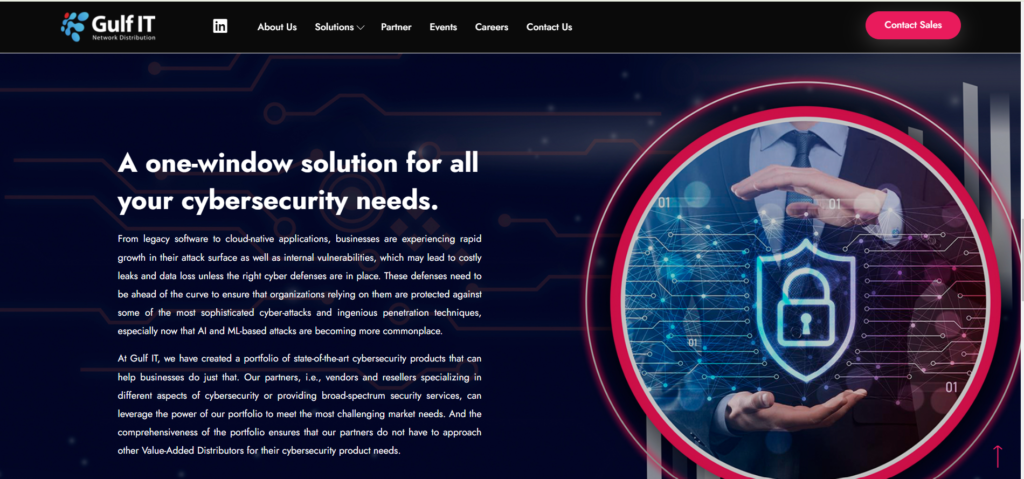30 Great Ways For Choosing A UAE Cyber Security Service
Wiki Article
Top 10 Tips For Assessing The Range Of Services Of Cybersecurity Services In Dubai, Uae
1. Choose Core Services OfferedBegin your search by finding out what core services are provided by the firm. The most common services are assessment of risk and management of threats. Incident response and vulnerability assessment, penetration testing, security audits, and incident response are all common. Understanding their core competencies can help you decide if they are a good fit for your specific requirements.
2. Evaluate Managed Security Services
Find out if they offer managed security service (MSS). MSS providers provide ongoing monitoring and management of systems. This is essential for organizations without in-house security experts. The ability to assess their capabilities in this area can reveal their capability to provide continuous support.
3. Assessment Compliance and Regulatory Services
Make sure the cybersecurity provider provides services to ensure compliance with international and local laws. It is possible to get help regarding the GDPR, PCI DSS and local laws regarding data protection. Companies operating in highly-regulated fields must focus on the compliance of their business.
Review Capabilities for Incidents
Inquire about the company's services to assist with incident response. A robust incident response plan should include detection, control, eradication of the threat, recovery and lessons from the experience. Knowing how they approach incident response will give insight on their readiness to deal with security attacks.
5. Specialized Services
Find out if the company provides specialized services tailored to specific sectors or requirements. Cloud security, IoT protection, or particular protections specific to certain industries such as finance or healthcare might be part of the. Specific services showcase the company's capability to tackle unique challenges.
6. Examine Training and Awareness Programs
Check if your company provides awareness programs and training courses for its employees. Training for employees is crucial in the reduction of security breaches due to human mistakes. Businesses that provide comprehensive training can improve your overall security posture.
7. Check for Threat Intelligence Services
Find out if the company offers threat intelligence services. These services inform organizations of new vulnerabilities and threats. They also allow proactive measures. Your security strategy can be significantly enhanced by an effective threat intelligence system.
8. Evaluate Technology Partnerships
Examine the partnership between the business and the technology providers. Collaborations with the leading providers of cybersecurity technology can enhance the services provided and provide access to the latest tools and solutions. A broad ecosystem of technology can help to improve security.
9. Examine Flexibility and Customization
Check if the company can tailor services to your specific requirements. In the field of cybersecurity, a one-size is not going to be enough. Knowing the flexibility of the business in the design of their solutions is vital to addressing specific security risks.
Review Service Level Agreements
SLAs are a reliable way to determine the quality of service. SLAs provide clear guidelines for the scope of services as well as response rates and performance indicators. Understanding these agreements can help set expectations for service delivery as well as accountability. Have a look at the best Cyber security services for more info including cyber security requirement, it security logo, information security information, network and security, info security, information technology security, network and security, cyber security platforms, security managed, it security description and more.

Top 10 Ways To Evaluate The Ability Of An Incident Response Team The Cybersecurity Service Company
1. Learn about Incident Response FrameworkBegin by examining the framework for incident response that the company is using. If the framework is well specified, like in the NIST Cybersecurity Framework, or SANS Incident Response Process for instance, it suggests that the business adheres to industry-standard practices to manage incidents effectively. Be sure that they follow a structured approach to dealing with incidents.
2. Evaluate Incident Response Team Expertise
Take note of the qualifications and experience that your team for incident response have. Check for certifications like Certified Incident Handler (GCIH) or copyright Security Professional (copyright). Team members with a solid understanding in the discipline of incident handling and mitigation are able to effectively manage and minimize incidents.
Recall past incidents and cases research
You can request examples or case studies of incidents that have been handled by the business. Analyzing the response of real-life situations to incidents could provide insight into how effective rapid, quick and general their approach is to managing incidents. You can find out how they contained and resolved incidents through their detailed reports.
4. Make sure you have a 24-hour emergency response Availability
If a company offers round-the clock incident response, you should check. Cybersecurity incidents may occur at any time. If you have a 24/7 team, you will be able to minimize the impact and time to recover.
5. Contact Us About Incident System for Detection
Review the tools and techniques that your company employs for incident detection. The most effective detection tools, such as Security Information and Event Management Systems (SIEM) and intrusion detection systems (IDS) can assist to identify threats earlier.
6. Examine Communication Protocols
Investigate the communication protocols the company implements in the event of an incident. Effective communication is crucial for coordinating responses, as well as for informing stakeholders and ensuring everyone is aware what their role is during an incident. Being aware of how they inform customers throughout the response is important.
7. Review Review Post-Incident Review Processes
Find out about the process of reviewing post-incidents for your business. The depth of reviewing after an incident helps determine what lessons gained and what improvements could be made. Seek out companies that have implemented adjustments based on the reviews to strengthen their future response efforts.
8. Evaluation of Recovery and Remediation strategies
It is essential to comprehend the strategies used by the company for recovery and remediation following an incident. Effective recovery plans should detail the steps they take to recover data and systems, and ensure that any vulnerabilities are addressed to prevent future events. Ask about the approach they take in restoring and strengthening their systems following an incident.
9. Review compliance with regulatory Requirements
Ascertain that the company has incident response capabilities that meet the regulations. In some industries, there are specific requirements regarding incident reporting and response. It is essential to work with a company that is aware of these rules to ensure compliance.
10. Ask for references and testimonials
Also, collect references from existing customers who have used the company's incident response services. Client testimonials can provide valuable insights into their effectiveness, reliability, and overall satisfaction with the service provided during incidents. Have a look at the top penetration testing dubai for website info including cybersecurity technologist, ai in cybersecurity, cybersecurity and ai, secure it company, managed it services security, security on website, business and cybersecurity, cyber security requirement, security ot, inform security and more.

Top 10 Tips For Assessing The Security Awareness Training Provided By The Cybersecurity Service Provider
1. Evaluation of Training ContentStart your assessment by examining every detail in the training programs to increase your security awareness. Verify that the training program is covering important topics like social engineering as well as phishing, password security and data protection. A comprehensive curriculum is vital for equipping employees with the skills they require to detect and deal with possible threats.
2. Check for Customization Option
Ask if you are able to tailor the training to meet your specific organization's needs and its culture. Tailoring your training to address unique challenges and scenarios that confront the employees of your organization can increase relevance and improve engagement.
3. Examine Training Delivery Methods
Consider the various options available for delivery. Options include interactive simulations, webinars, online courses, and workshops. Different formats can be used to cater to different learning styles and enhance overall effectiveness.
4. Look for Interactive Elements
Check if the training includes interactivity, such as quizzes, simulations, and actual scenarios. Interactive training increases the learning process and engagement making it easier to apply knowledge in real-world situations.
5. Examine the frequency of updates
You should inquire about the frequency the training sessions are conducted and how often the content of the course is revised. Due to the constant evolution of cybersecurity threats regular training sessions as well as frequent updates to the training curriculum are vital to keep employees up-to-date on the latest threats and best methods.
6. Effectiveness measurement
The way a company assesses the effectiveness of their training programs is important. Take note of metrics, such as the pre-and-post-training assessment and feedback from participants or patterns in the reporting of incidents. Assessing the program's impact will help you determine its effectiveness and areas for improvement.
7. Check Certification and Compliance
If the course is certified it will increase employee credibility. Certifications can enhance employee credibility and prove that they have acquired the necessary knowledge. Also, make sure that the training meets any relevant regulatory compliance requirements your organization may have.
8. Seek out testimonials and references.
Get feedback from companies that have previously utilized the training services. Testimonials can provide insights into the effectiveness of the training and how well it has been received by employees. Positive feedback from customers could be a sign that a trainer is well-known for providing impactful awareness-training.
9. Examine Post-Training Assistance
Ask about the support that will be provided once the training has been completed. Refresher classes, newsletters or access to knowledge bases can reinforce the training.
10. Assess the level of engagement and culture building
The last stage is to analyze the contribution of your training program in developing a security culture in the organization. Look for initiatives that promote the continuous education of employees. These could include security-related newsletters and seminars. A strong culture of security encourages employees take ownership in the protection of the organization. View the best iconnect for site advice including business and cybersecurity, cybersecurity consultancy, network security, security on website, network security tech, technology and cyber security, cyber security strategies, cyber security information, best cyber security company, cyber security job and more.
